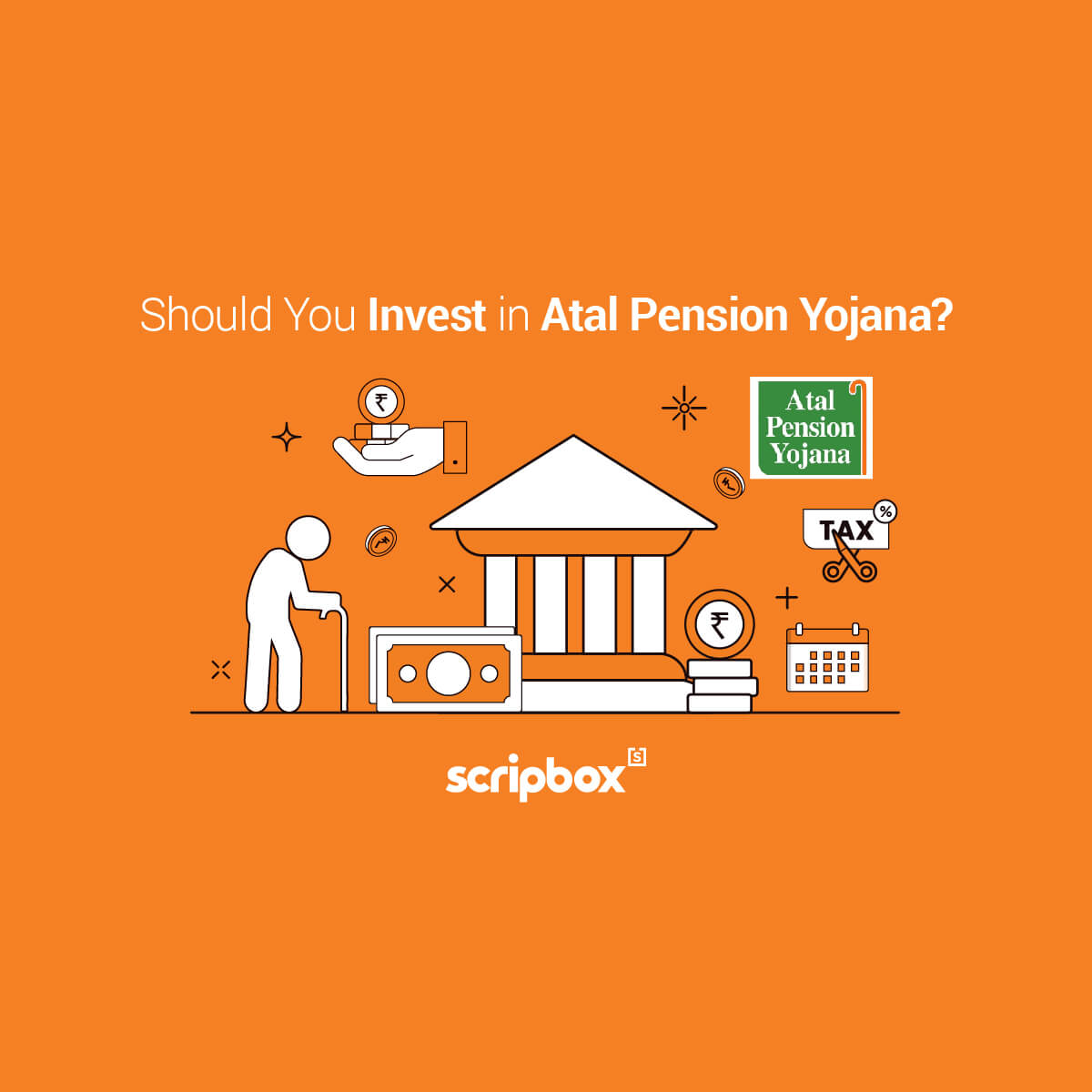The Government of India, at all levels, announces welfare schemes for a diverse group of people on a regular basis. These schemes could be central, state-specific, or a cooperative effort between the central government and the state governments. The intent of these programs is to help the poor, economically disadvantaged, rural residents, and other vulnerable members of society. They aim at the social and economic well-being of every Indian citizen. The Union Government Schemes are the initiatives of India’s Ministries of the Central Government. These programs play a critical part in addressing the country’s socio economic issues. They assist with the upliftment of the most disadvantaged members of society by providing them with basic and necessary amenities.
List of Government Schemes 2025
- Atal Pension Yojana
- Ayushman Bharat Yojana
- Antyodaya Anna Yojana
- Credit Guarantee Scheme for Startups (CGSS)
- Deen Dayal Upadhyaya Grameen Kaushalya Yojana
- Deen Dayal Upadhyaya Antyodaya Yojana
- Pradhan Mantri Awaas Yojana-Gramin
- Pradhan Mantri Matritva Vandana Yojana
- Pradhan Mantri Adarsh Gram Yojana
- Pradhan Mantri Kaushal Vikas Yojna
- Pradhan Mantri Suraksha Bima Yojana
- Pradhan Mantri Jeevan Jyoti Bima Yojna
- Pradhan Mantri Jan Dhan Yojana
- Pradhan Mantri Awas Yojana
- Antyodaya Anna Yojana
- Pradhan Mantri Ujjwala Yojana
- Rashtriya Krishi Vikas Yojana
- Swamitva Yojana
- Startup India
- Skill India Mission
- Unnat Jeevan by Affordable LEDs and Appliances for All (UJALA)
1. Atal Pension Yojana
The Atal Pension Yojana is a pension plan aimed mostly at unorganized workers such as maids, gardeners, and delivery boys. The APY scheme replaced the former Swavalamban Yojana, which was not well received by the public.
The Pension Funds Regulatory Authority of India regulates this voluntary pension system, which was started in 2015. (PFRDA). The lowest age to join is 18 years old, and the maximum age to join is 40 years old. The contribution duration for this program should be at least 20 years, and investors must contribute until they reach the age of 60. At the age of 60, they are eligible for a monthly guaranteed pension. Based on the contributions made, the fixed monthly pension ranges from INR 1,000 to INR 5,000.
2. Ayushman Bharat Yojana
Ayushman Bharat, the government of India’s flagship initiative, was established in line with the National Health Policy 2017’s recommendation to accomplish the vision of Universal Health Coverage (UHC). The goal of this project is to meet the Sustainable Development Goals (SDGs) and the underpinning pledge to “leave no one behind.”
Ayushman Bharat is an endeavour to transition from a sectoral and segmented strategy to a comprehensive, need-based health care system. This program aims to implement ground-breaking initiatives at the primary, secondary, and tertiary levels. The objective is to address the healthcare system holistically (including prevention, promotion, and ambulatory care). Ayushman Bharat is based on a continuum of care model, with two interconnected components: Health and Wellness Centres and Pradhan Mantri.
3. Antyodaya Anna Yojana
According to a National Sample Survey Exercise, roughly 5% of India’s overall population sleeps without two square meals per day. The goal of the Targeted Public Distribution System (TDPS) is to distribute food and grains to the poor.
The Antyodaya Anna Yojana (AAY) was introduced in December 2000 to make the TPDS more helpful and focused on the correct type of population. AAY is a government program that aims to give heavily discounted food to one crore of India’s poorest families.
4. Credit Guarantee Scheme for Startups (CGSS)
The Government of India (GoI) established the Credit Guarantee Fund Scheme for Micro and Small Enterprises (CGS) to provide collateral-free credit to the micro and small business sector. Existing and new businesses are also eligible for coverage under the scheme.
The Credit Guarantee Fund Trust for Micro and Small Enterprises (CGTMSE) was established by the Ministry of Micro, Small and Medium Enterprises of the Government of India and the Small Industries Development Bank of India (SIDBI). The intent is to implement the Credit Guarantee Fund Scheme for Micro and Small Enterprises.
5. Deen Dayal Upadhyaya Grameen Kaushalya Yojana
The Deen Dayal Upadhyaya Grameen Kaushalya Yojana focuses only on rural youth aged 15 to 35 from low-income families. It supports the government’s social and economic programs, such as Make in India, Digital India, Smart Cities, and the Start-Up India, Stand-Up India campaigns, as part of the Skill India campaign. Rural areas are home to about 180 million young people, or 69% of the country’s population between the ages of 18 and 34. About 55 million of these are bottom-of-the-pyramid kids from poor homes with little or minimal jobs.
6. Deen Dayal Antyodaya Yojana
The aim of Deen Dayal Antyodaya Yojana (DAY) is to improve sustainable livelihood prospects for urban disadvantaged people via skill development. Skill development is critical for socioeconomic improvement, especially in light of the Make in India goal. The Ministry of Housing and Urban Poverty Alleviation launched the Deen Dayal Antyodaya Yojana (HUPA). The initiative has been allocated Rs.500 crore by the Indian government.
7. Pradhan Mantri Awaas Yojana-Gramin
The Pradhan Mantri Awaas Yojana Gramin (PMAYG) is a rural housing scheme aimed at providing “Housing for All’’ by the year 2022. Households earlier living in ‘Kutcha’ houses, with temporary walls and roof, are being provided with a ‘Pucca’ house. Each house under the scheme is equipped with basic amenities and hygienic cooking spaces. PMAYG is a social welfare scheme designed to consequently uplift the living standards of citizens of rural India
8. Pradhan Mantri Matritva Vandana Yojana
The Pradhan Mantri Matru Vandana Yojana (PMMVY) is a Centrally Sponsored Direct Benefit Transfer (DBT) Government scheme. It provides a monetary incentive of Rs. 5000/- (in three instalments) to Pregnant Women and Lactating Mothers.
9. Pradhan Mantri Adarsh Gram Yojana
The Pradhan Mantri Adarsh Gram Yojana (PMAGY) was introduced to facilitate an area-based development approach. The Ministry of Social Justice and Empowerment is in charge of it. The goal of this project is to turn our country’s villages into model villages with physical and social infrastructure that aids in socioeconomic growth.
It attempts to close the gap between SCs and other communities in terms of literacy rates, infant mortality rates/maternal death rates, elementary school completion rates, and asset ownership. This project aims to establish villages with a large percentage of residents belonging to the scheduled castes (above 50%).
10. Pradhan Mantri Kaushal Vikas Yojana
The Pradhan Mantri Kaushal Vikas Yojana (PMKVY) is the Ministry of Skill Development and Entrepreneurship’s (MSDE) flagship scheme. The yojana is implemented by the National Skill Development Corporation. The goal of this Skill Certification Scheme is to allow a large number of Indian youth to participate in industry-relevant skill training that would help them secure a better living. Individuals with existing skill sets can be examined and given a certificate through the Recognition of Prior Learning program.
11. Pradhan Mantri Suraksha Bima Yojana
Public Sector General Insurance Companies (PSGICs) offer the PMSBY scheme primarily. However, any other general insurance company can offer the scheme as well. Such insurance company must be willing to offer the product on identical conditions with the requisite approvals and banking partnerships. The Government Scheme is open to persons between the ages of 18 and 70. They must have a bank account and sign up for or allow auto-debit on or before May 31st for the coverage period of 1 June to 31 May on an annual renewal basis. The primary KYC for the bank account would be Aadhar. The policy provides Rs. 2 lakh in risk coverage for accidental death and total disability, and Rs. 1 lakh in risk coverage for partial impairment.
12. Pradhan Mantri Jeevan Jyoti Bima Yojana
The program is being provided by the Life Insurance Corporation and any other life insurers. They must offer the product on comparable conditions with the requisite approvals and bank partnerships. As of March 31, 2019, the total gross enrollment reported by banks under PMJJBY was over 5.91 crore, subject to verification of eligibility and other factors. Under PMJJBY, a total of 145763 claims were filed, with 135212 of them being paid. People between the ages of 18 and 50 who have a bank account and agree to join / allow auto-debit are eligible for the PMJJBY. The basic KYC for a bank account is Aadhar.
13. Pradhan Mantri Jan Dhan Yojana
Its aim is to ensure access to affordable financial services for individuals who do not hold any other account. These financial services include a basic savings bank account & deposit accounts, remittance, credit, insurance, and pension. Under PMJDY you can open a basic savings bank account in any bank branch or Business Correspondent (Bank Mitra) outlet.
14. Pradhan Mantri Awas Yojana- Urban
On June 25, 2015, the Pradhan Mantri Awas Yojana – Urban (PMAY-U), a flagship Mission of the Government of India, was inaugurated by the Ministry of Housing and Urban Affairs (MoHUA). By 2022, as the country celebrates 75 years of independence, the Mission aims to address the urban housing crisis among the EWS/LIG and MIG categories, including slum dwellers, by ensuring a pucca dwelling for all qualified urban households.
15. Pradhan Mantri Ujjwala Yojana
The Pradhan Mantri Ujjwala Yojana (PMUY) is a flagship scheme with the goal of making clean cooking fuel like LPG available to rural and impoverished households. These households were previously reliant on traditional cooking fuels like firewood, coal, and cow-dung cakes. The use of traditional cooking fuels had a negative influence on both rural women’s health and the environment.
16. Rashtriya Krishi Vikas Yojana
This Government scheme’s principal goal is to promote agriculture as a primary source of economic activity. The Rashtriya Krishi Vikas Yojana aims to assist states in developing agricultural plans based on their particular agro-climatic conditions and resource availability. Another main goal of this program is to boost production by utilizing cutting-edge technologies and to prioritize local produce. The plan also aims to eliminate farmer inequality by narrowing the difference between small and large farmers and assisting them in bridging the output gap.
17. Swamitva Yojana
The Hon’ble Prime Minister inaugurated SVAMITVA, a Central Sector Scheme of the Ministry of Panchayati Raj, across the country on National Panchayati Raj Day, April 24, 2021. The scheme is a reformative step toward establishing clear ownership of property in rural inhabited (Abadi) areas. It is done by mapping land parcels with drone technology and providing ‘Records of Rights’ to village household owners, along with the issuance of legal ownership cards (Property cards/Title deeds). The Ministry of Panchayati Raj, the State Revenue Department, the State Panchayati Raj Department, and the Survey of India are working together to implement the scheme.
18. Skill India Mission
The mission of the scheme is To provide training and skill development to the youth of our country covering each and every village/city and to empower all individuals through improved skills, knowledge and employment opportunities.
19. Startup India Scheme
On April 5, 2016, the Indian government announced the Stand Up India initiative. For building up greenfield firms, this Government Scheme allows bank loans between Rs.10 lakh and Rs.1 crore. The scheme is available to at least one Scheduled Caste/ Scheduled Tribe borrower and at least one Woman borrower per bank branch. This company could be in the manufacturing, service, or trading industries. At least 2.5 lakh borrowers will benefit from the scheme, which is being implemented by all Scheduled Commercial Banks. The scheme is up and running, and loans are being made available through Scheduled Commercial Banks all around the country.
The Stand Up India scheme aims to promote entrepreneurship among women, SC and ST people. Those who face substantial challenges due to a lack of advice/mentorship as well as insufficient and delayed credit. The initiative aims to use the institutional credit structure to reach out to underrepresented populations in order to help them start greenfield businesses. It serves both experienced and inexperienced borrowers.
20. Unnat Jeevan by Affordable LEDs and Appliances for All (UJALA)
Recognizing the importance of energy efficiency in a country with one of the world’s largest populations, the Indian government launched the UJALA (Unnat Jeevan by Affordable LEDs and Appliances for All) Scheme in 2015, with the goal of ensuring that every family has LED-powered appliances. This program was critical in enabling the country’s vast base of price-sensitive customers to purchase LEDs by making them cheap. The LEDs have been dubbed the “Prakash Path,” which means “path to light,” due to the widespread belief in their efficiency.
Objectives of Government Schemes
The Union Government’s several Ministries have launched a number of different programmes for the benefit of the citizens. Every scheme has its own set of goals and objectives. However, the primary goal of these programs is to deliver social, financial, and economic benefits to Indian citizens. The following are the major goals of social-economic and financial schemes:
- To provide social security measures such as pensions, insurance, maternity benefits, and housing, among other advantages.
- To improve citizen’s quality of life.
- Upliftment of the citizen’s below the poverty line
- Develop the rural and backward areas of the country.
- Reducing economic disparities among society’s various segments.
- Empower women so that they can participate more fully in society.
- To create employment.
- To provide education and training to the most vulnerable members of society.
- To provide financial stability to those who are most vulnerable in society.
- To provide financial support to women, small enterprises, and people from underprivileged sections of society.
Advantage of Government Schemes
Individuals
Individual schemes primarily target the most vulnerable members of society, such as rural and urban poor households, women, SC and ST, senior citizens, domestic workers, and so on. Individuals can benefit from government programs that provide training and job possibilities. Some schemes assist individuals in obtaining low-interest loans, opening a bank account, obtaining financial aid to meet personal costs, acquiring insurance, and enrolling in a pension plan for a low fee.
Some of the programs focus on women’s growth and empowerment. It offers financial support to women who want to start their own business. There are programs that assist women with basic schooling, maternity benefits, and rehabilitative services. Some individual schemes focus on supplying fundamental essentials to individuals, such as LED lights, drinking water, food distribution, housing, and a clean environment.
Businesses
The Union Government has launched schemes to assist Indian enterprises. These plans make it easier to do business, which strengthens the economy of India. Businesses benefit from the initiatives developed for them by receiving financial and technical aid to help them grow. Many business plans offer perks such as low-interest loans, credit guarantees, subsidies for technical upgrades, and venture capital help, among other things.
Many recent schemes encourage people to start small businesses by providing entrepreneurial and training opportunities, building manufacturing infrastructure, providing incentives for women and economically disadvantaged people to start businesses, creating a digital platform for accessing global markets and digital documentation, and so on.
Similar Articles
- List of Government Schemes 2025
- 1. Atal Pension Yojana
- 2. Ayushman Bharat Yojana
- 3. Antyodaya Anna Yojana
- 4. Credit Guarantee Scheme for Startups (CGSS)
- 5. Deen Dayal Upadhyaya Grameen Kaushalya Yojana
- 6. Deen Dayal Antyodaya Yojana
- 7. Pradhan Mantri Awaas Yojana-Gramin
- 8. Pradhan Mantri Matritva Vandana Yojana
- 9. Pradhan Mantri Adarsh Gram Yojana
- 10. Pradhan Mantri Kaushal Vikas Yojana
- 11. Pradhan Mantri Suraksha Bima Yojana
- 12. Pradhan Mantri Jeevan Jyoti Bima Yojana
- 13. Pradhan Mantri Jan Dhan Yojana
- 14. Pradhan Mantri Awas Yojana- Urban
- 15. Pradhan Mantri Ujjwala Yojana
- 16. Rashtriya Krishi Vikas Yojana
- 17. Swamitva Yojana
- 18. Skill India Mission
- 19. Startup India Scheme
- 20. Unnat Jeevan by Affordable LEDs and Appliances for All (UJALA)
- Objectives of Government Schemes
- Advantage of Government Schemes































Show comments